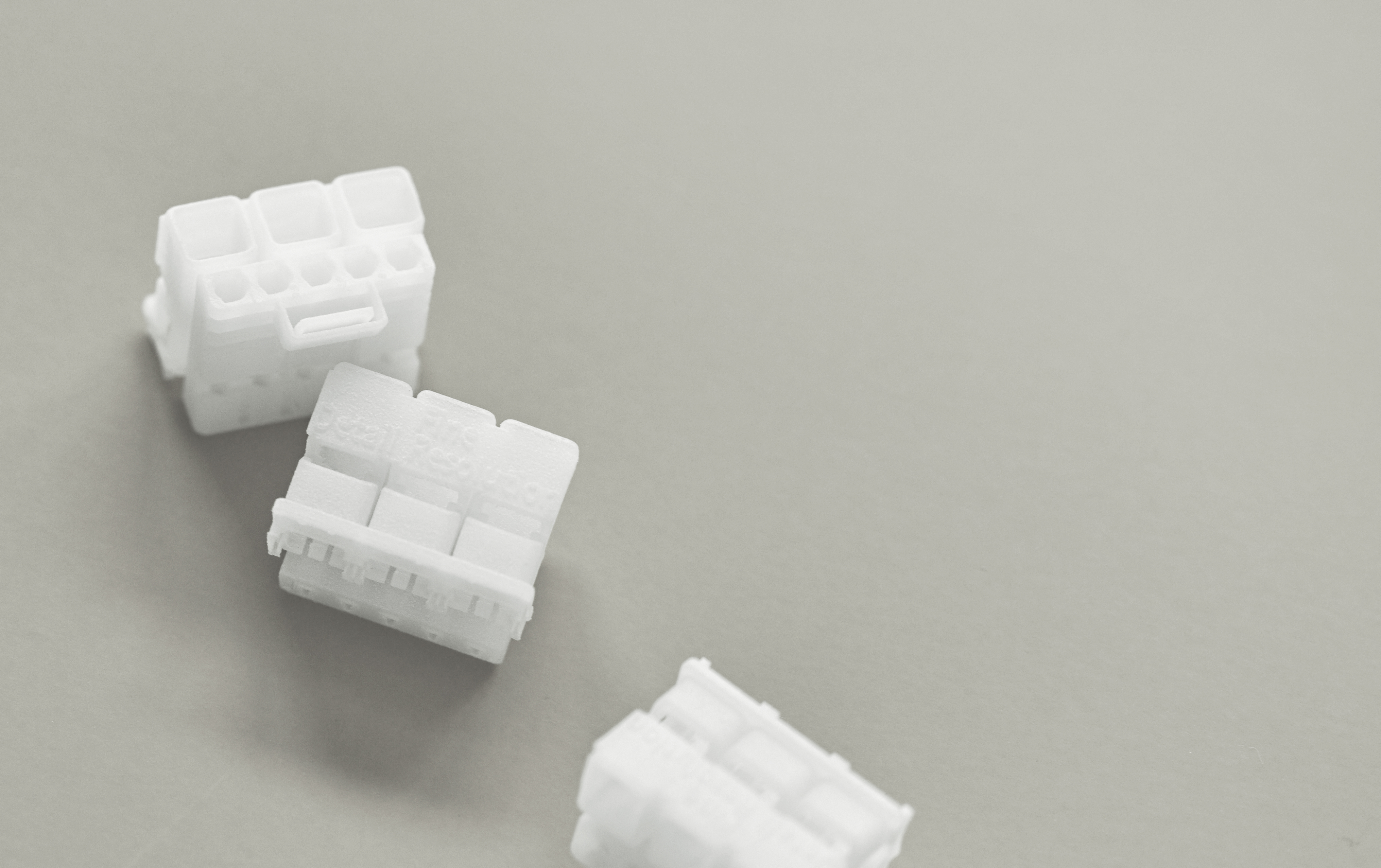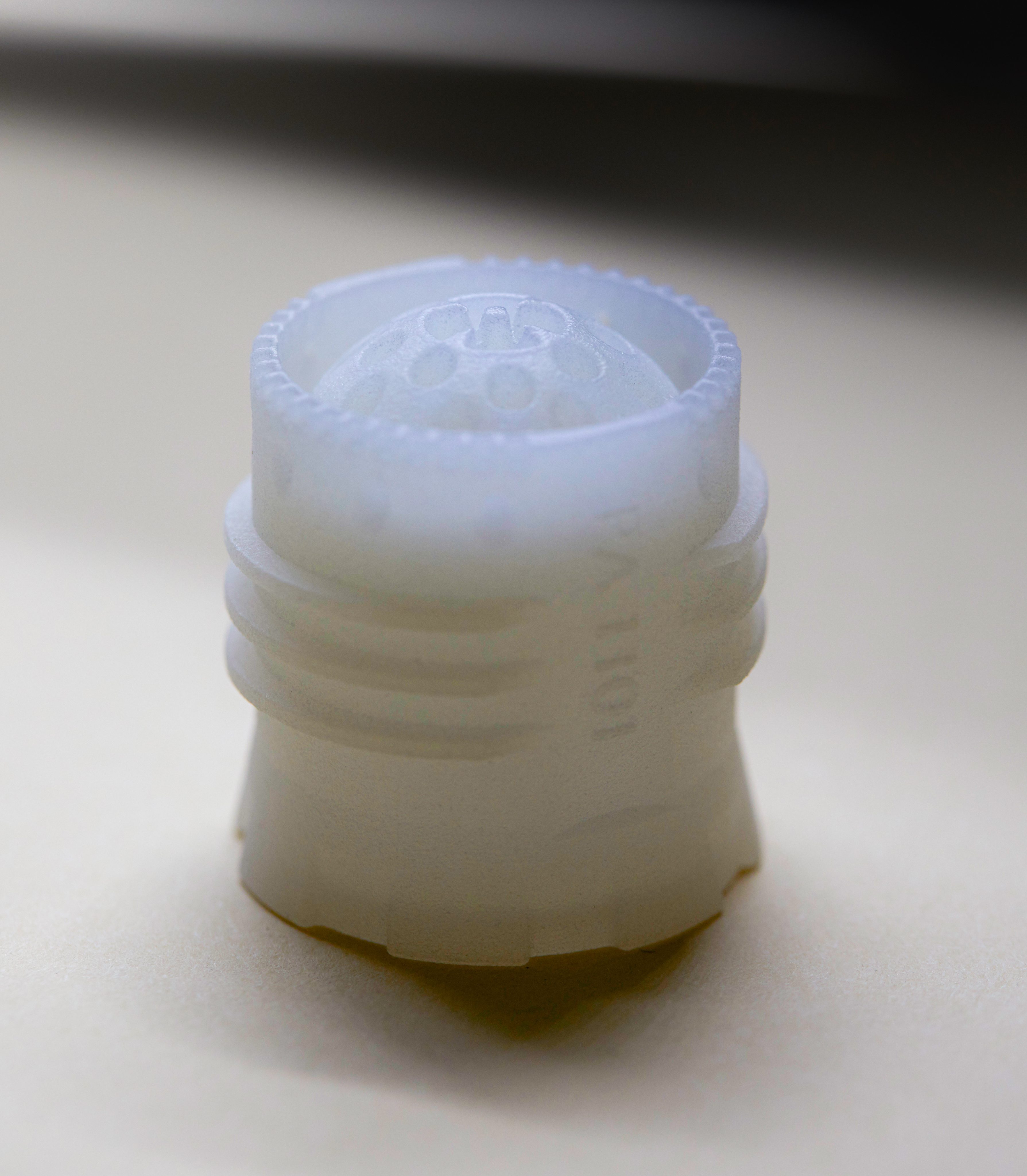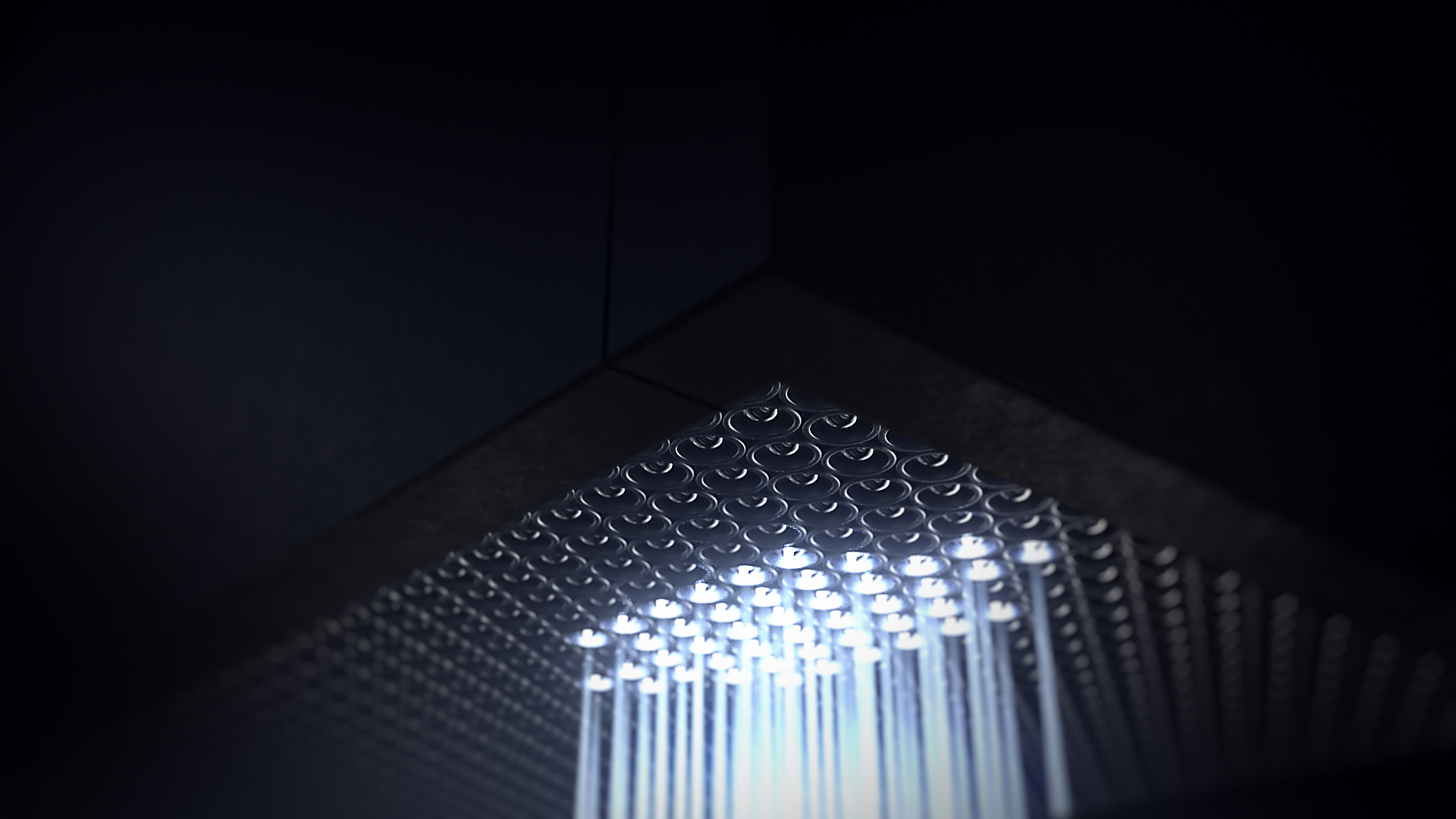During this year’s Formnext show, leading German 3D printer manufacturer EOS is showcasing its Fine Detail Resolution (FDR) polymer-based 3D printing technology.
The new process uses a CO laser to 3D print delicate yet robust polymer components with fine detail resolution surfaces and a minimum wall thickness of 0.22 mm.
EOS states that it is the first manufacturer to create a process for powder-based 3D printing using a CO laser. The company explains that its FDR technology can create new applications for 3D printing in series production, and also expands customers’ options when it comes to selecting the right EOS 3D printing technology for polymers. Dr. Tim Rüttermann, Senior Vice President Polymer Division, explains:
“The new technology will combine the best of two worlds – the detailed resolution of stereolithography (SLA) with the durability and quality of selective laser sintering (SLS).”

Fine Detail Resolution technology for polymer 3D printing
Equipped with a 50 watt CO laser, FDR is designed for 3D printing applications involving delicate structures, surfaces with a fine detail resolution and thin wall thicknesses. The CO laser type creates an ultra-fine laser beam that has a focus diameter reportedly half the size of current SLS technologies. This can help to create new exposure parameters resulting in the development of superfine surfaces.
Thus far, the FDR process has been tested and certified with PA 1101. This material is processed in layer thicknesses of 40 and 60 µm, and is high impact resistant, with high elongation at break. Furthermore, PA 1101 is crafted from renewable raw materials.
EOS is developing FDR technology for its polymer production platform, with the intention of creation new applications for polymer-based 3D printing. This includes filter units and fluid channels, plugs, and other electronic components, as well as consumer goods such as eyeglasses.

An ecosystem of polymer 3D printing technologies
EOS positions its new CO laser-based FDR technology alongside its P 500 and LaserProFusion 3D printing technologies to cover three different applications for polymer-based additive manufacturing.
Whereas FDR technology is focused on producing delicate components, the EOS P 500 SLS 3D printer is designed for manufacturing polymer components with a focus on material flexibility. It is equipped with a CO2 laser with an output of 2x 70 watts, capable of processing materials such as PA 12, PA 11, PA 6, TPU, and other high-performance polymers. Launched in 2017, the platform is geared towards applications in the automotive and electronics industry.
EOS’ LaserProFusion technology on the other hand was initially premiered at Formnext 2018. This process is designed for maximum productivity, as it is equipped with 1 million diode lasers, capable of producing over 5 kilowatts of accumulated laser power. This technology is primarily aimed at meeting the requirements of series production, and EOS states that it can be used as a replacement for injection molding in many applications.
“In future, depending on application requirements, customers will therefore be able to choose between the existing EOS P 500 version with a CO2 laser for high productivity and material flexibility; or the CO laser-based FDR technology for manufacturing extremely delicate components; or, if the focus is on maximum productivity with dedicated application material, they can decide for the upcoming EOS LaserProFusion technology concept that was showcased for the first time at the formnext 2018,” adds Dr. Rüttermann.

EOS is presenting its FDR technology for the first time at Formnext 2019, from Stand D31 in Hall 11.1.
Subscribe to the 3D Printing Industry newsletter for the latest news in additive manufacturing. You can also stay connected by following us on Twitter and liking us on Facebook.
Looking for a career in additive manufacturing? Visit 3D Printing Jobs for a selection of roles in the industry.
Featured image shows 3D printed part using FDR technology. Photo via EOS.


